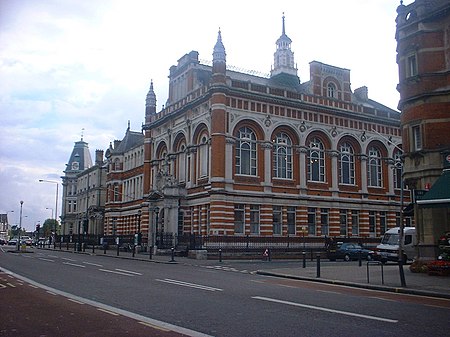Leyton Town Hall
City and town halls in LondonEvent venues established in 1895Government buildings completed in 1895Grade II listed buildings in the London Borough of Waltham ForestGrade II listed government buildings ... and 1 more
Use British English from April 2022

Leyton Town Hall is a municipal building in Adelaide Road, Leyton, London. The building, which includes Leyton Great Hall, is a Grade II listed building.
Excerpt from the Wikipedia article Leyton Town Hall (License: CC BY-SA 3.0, Authors, Images).Leyton Town Hall
Ruckholt Road, London Temple Mills (London Borough of Waltham Forest)
Geographical coordinates (GPS) Address Nearby Places Show on map
Geographical coordinates (GPS)
| Latitude | Longitude |
|---|---|
| N 51.5583 ° | E -0.0078 ° |
Address
Ruckholt Road 2b
E10 5GQ London, Temple Mills (London Borough of Waltham Forest)
England, United Kingdom
Open on Google Maps








